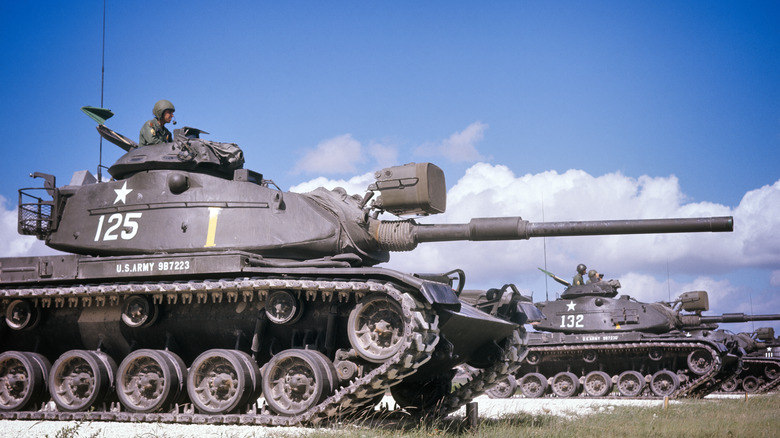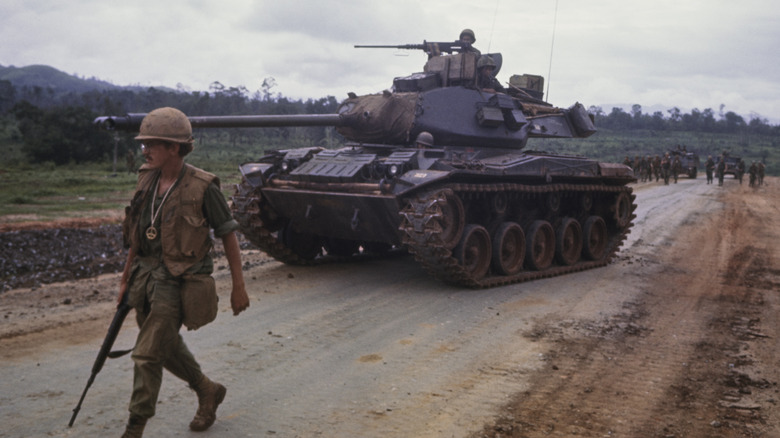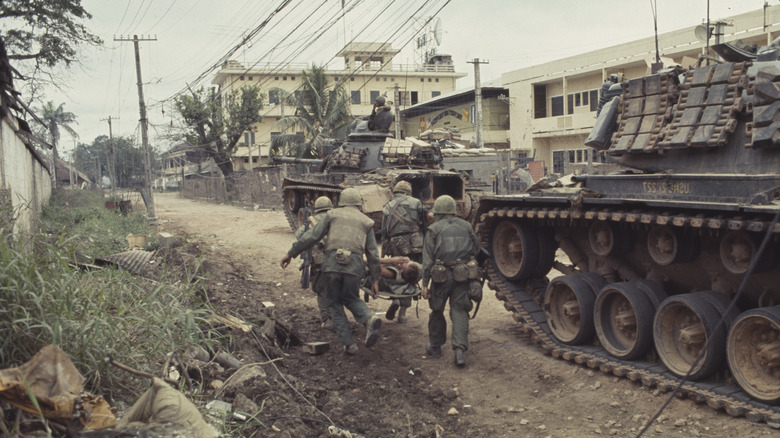Tanks In The Vietnam War: What Role Did They Play?
The battlefields of World War II saw the widespread use of tanks in every environment possible. Whether it was the open fields of France with the German Blitzkrieg, the deserts of North Africa with the British, or the push into Germany by the Americans, tanks became critical to battlefield success. It then comes as no surprise that the tank would continue to be modified, refined, and improved for the conflicts after it, including Vietnam.
Those early tanks in World War II included the M3 Lee and the M4 Sherman. Key improvements were needed from one model to the next such as the positioning of the main gun and the thickness of the armor. The need for heavier armor and more firepower led to the introduction of the M26 Pershing late in the war. The Korean War would see the Pershing's replacement, the M46 Patton, take the field. The M46 was advanced in nearly every category, from speed (30 mph) to firepower (90mm main gun), which proved useful in defeating North Korean T-34 tanks in the Korean War.
The tanks used in Vietnam
The war in Vietnam would see the deployment of America's most advanced tank yet: the M48 Patton. The Patton was part of a massive Army tank modernization project to confront Soviet tanks more effectively (after all, it was also the Cold War). The M48 was armed with a 90mm main gun and .30 and .50 caliber machine guns. The tank was wrapped in armor that ranged from 120mm thick in the front to 44mm in the rear and could achieve a top speed of 30 mph. The U.S. would deploy the first M48s to Vietnam in March 1965 at Da Nang with over 600 eventually finding their way to the war.
The M48 Patton and all of its variants were not alone in Vietnam. Though not a tank, the M113 Armored Personnel Carrier (APC) was the counterpart to the M48 and a necessity for U.S. troops in the war. Developed in the 1950s, the M113 had light armor of between 12mm and 38mm thick with a .50 caliber Browning machine gun. It was manned by a crew of two and could transport up to 11 soldiers. The APC would first arrive in Vietnam in 1962 with many variations appearing during its service to fill various needs. These included the addition of M60 machine guns, flamethrowers, and even Vulcan 20mm Gatling guns.
The role of tanks in the war
At first glance, the role of the tank in Vietnam does not make sense as it was mostly a jungle environment. It would however play a critical role in providing fire support for infantry operations and at U.S. bases. Tanks were also used in convoy duty as well as providing additional firepower when engaging enemy bunkers. Tank and armored engagements were rare in Vietnam, but they did happen. One such event occurred in March 1969 at the Battle of Ben Het between four M48s and several North Vietnamese Army (NVA) PT-76 tanks and APC's. The engagement would see one M48 take damage while two enemy tanks and one APC were destroyed.
The M113 was a workhorse in Vietnam as it go through water, making it invaluable to both the Army of the Republic of Vietnam (ARVN) and the U.S. It served well in operations against lightly armed enemy guerilla fighters initially, but its weak armor led to many unofficial modifications. Some of these modifications included adding more plate armor to the floor to protect against mines, installing shield plates to protect the gunners from snipers, and the addition of more machine guns. Tanks and APCs provided American and allied troops with needed firepower and protection in Vietnam, even while, according to Capt. Dale Dye they were "getting banged around seriously by NVA rocket gunners who played whack-a-mole with the tanks."


